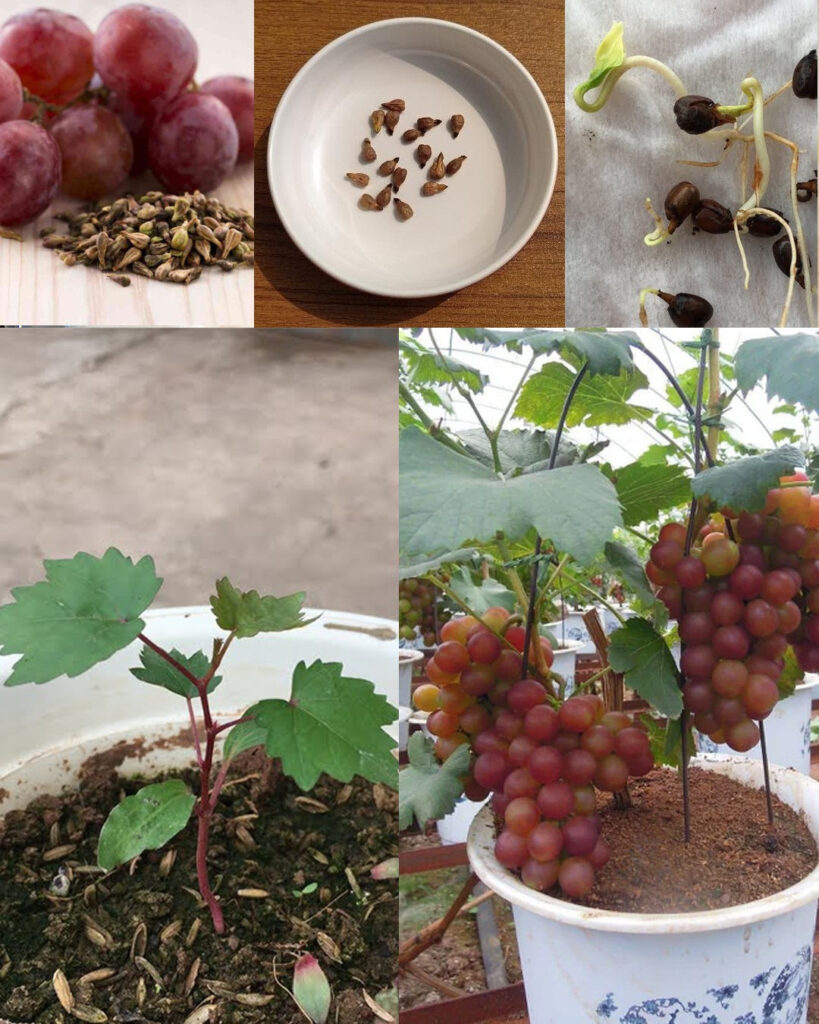Growing grapes at home can be a rewarding and enjoyable experience, especially if you enjoy fresh fruit or are interested in winemaking. Here’s a guide to help you get started:
1. Selecting Grape Varieties
- Description: Choose grape varieties that are well-suited to your climate and intended use.
- Variety Selection: Consider factors such as flavor, size, seedlessness, and disease resistance.
- Recommended Varieties: Some popular grape varieties for home cultivation include ‘Concord’, ‘Thompson Seedless’, ‘Cabernet Sauvignon’, and ‘Chardonnay’.
2. Choosing a Planting Location
- Description: Select a sunny location with well-drained soil.
- Sunlight: Grapes require full sun to thrive, so choose a spot that receives at least 6-8 hours of sunlight daily.
- Soil: Ensure the soil is well-drained and fertile. Sandy loam or loamy soil with a pH of 6.0-7.0 is ideal.
3. Preparing the Soil
- Soil Amendment: Test the soil and amend it with organic matter such as compost or well-rotted manure if necessary.
- Soil pH: Adjust the soil pH to the optimal range for grapes (6.0-7.0) using lime or sulfur as needed.
4. Planting Grapevines
- Timing: Plant grapevines in the spring after the danger of frost has passed.
- Planting Method: Dig a hole large enough to accommodate the root system of the grapevine. Space plants 6-10 feet apart.
- Support Structure: Install a trellis or support system for the grapevines to climb as they grow.
5. Watering and Mulching
- Watering: Provide consistent moisture, especially during the first growing season. Water deeply but infrequently to encourage deep root growth.
- Mulching: Apply a layer of organic mulch around the base of the grapevines to conserve moisture, suppress weeds, and regulate soil temperature.
6. Training and Pruning
- Training Method: Choose a training system based on your space and preferences, such as the single-curtain, double-curtain, or quadrilateral system.
- Pruning: Prune grapevines annually during the dormant season (late winter or early spring) to remove dead or diseased wood and promote airflow and fruit production.
7. Fertilizing
- Nutrient Needs: Apply fertilizer based on soil test recommendations or general guidelines for grapevines.
- Timing: Fertilize grapevines in the spring before new growth begins and again after fruit set if needed.
8. Pest and Disease Management
- Preventive Measures: Monitor for common pests such as aphids, leafhoppers, and grapevine moths, and diseases like powdery mildew and downy mildew.
- Organic Controls: Use cultural practices, beneficial insects, and organic sprays to manage pests and diseases as needed.
9. Harvesting
- Timing: Grapes typically ripen in late summer to early fall, depending on the variety and growing conditions.
- Harvesting: Harvest grapes when they are fully colored and slightly soft to the touch. Cut clusters from the vine using pruning shears.
10. Post-Harvest Care
- Storage: Store harvested grapes in the refrigerator for short-term storage or freeze them for longer-term preservation.
- Pruning: Prune grapevines after harvest to remove spent canes and maintain the desired shape and size.
Conclusion
With proper care and attention to growing conditions, you can successfully grow grapes at home. Whether you’re interested in fresh fruit for snacking, making homemade wine, or simply enjoying the beauty of grapevines in your garden, growing grapes can be a fun and rewarding endeavor.


